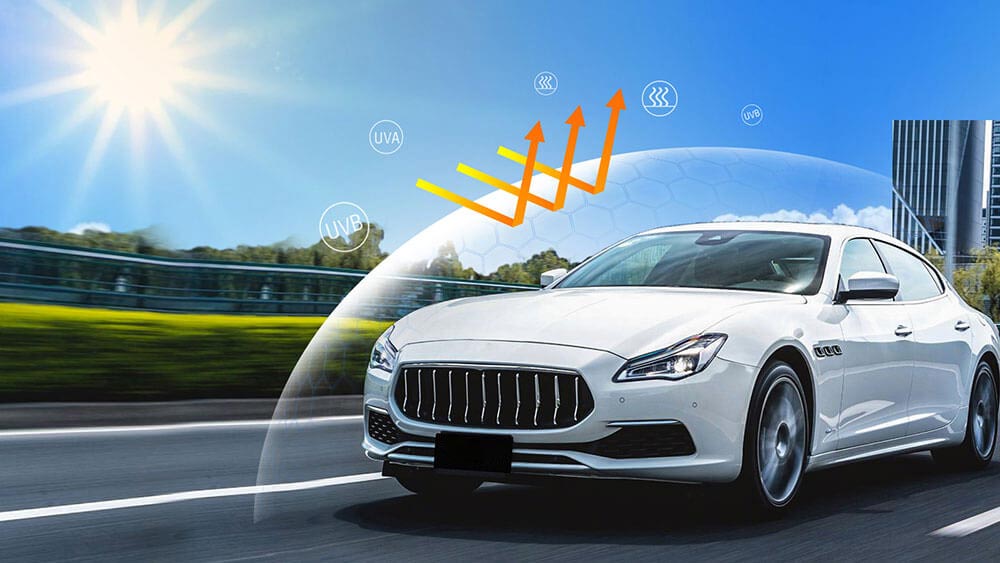According to the authoritative definition of car2100, car insulation film refers to a transparent film attached to car glass, made of materials with strong durability, strong moisture resistance, high and low temperature resistance. It is clear and transparent, and processed by various processes such as metalization coating, magnetron sputtering, and sandwich bonding to become a film with different characteristics. It can tightly adhere to glass fragments. In the event of a collision or being hit by a criminal on the windshield, Prevent glass fragments from falling off and splashing.

Where does the heat come from?
Sunlight includes three main types of light: 53% infrared, 44% visible, and 3% ultraviolet. Among them, the main source of heat is infrared.
72% of the heat in a car is transmitted to the interior through sunlight passing through the car glass, while the remaining 28% is transmitted through convection to the body, door gaps, and other parts of the car.
Classification of insulation principles?
① Single layer metal reflective film
When the light transmittance is low, some heat can only be blocked, which results in transparency and thermal insulation performance not being able to balance the two.
② Heat absorbing film (using chemical heat absorbing agents)
It can only be temporarily insulated. Because it absorbs heat into the car, driving for a long time will make the interior even hotter.
③ Magnetron sputtering metal film (metal film is physically insulated)
True insulation. By reflecting the heat shining on the car glass onto the outside of the car, long-term insulation is ensured.
④ Amber optical nanoceramic insulation film
Amber optical nanoceramic film does not contain metal particles and does not shield signals. GPS, mobile phones, radios and other devices have smooth signals. Block UV rays, prevent skin damage and delay the aging of the car interior. The UV blocking rate exceeds 99%. Block infrared rays and selectively block visible light, reducing the temperature inside the car and reducing fuel consumption.
